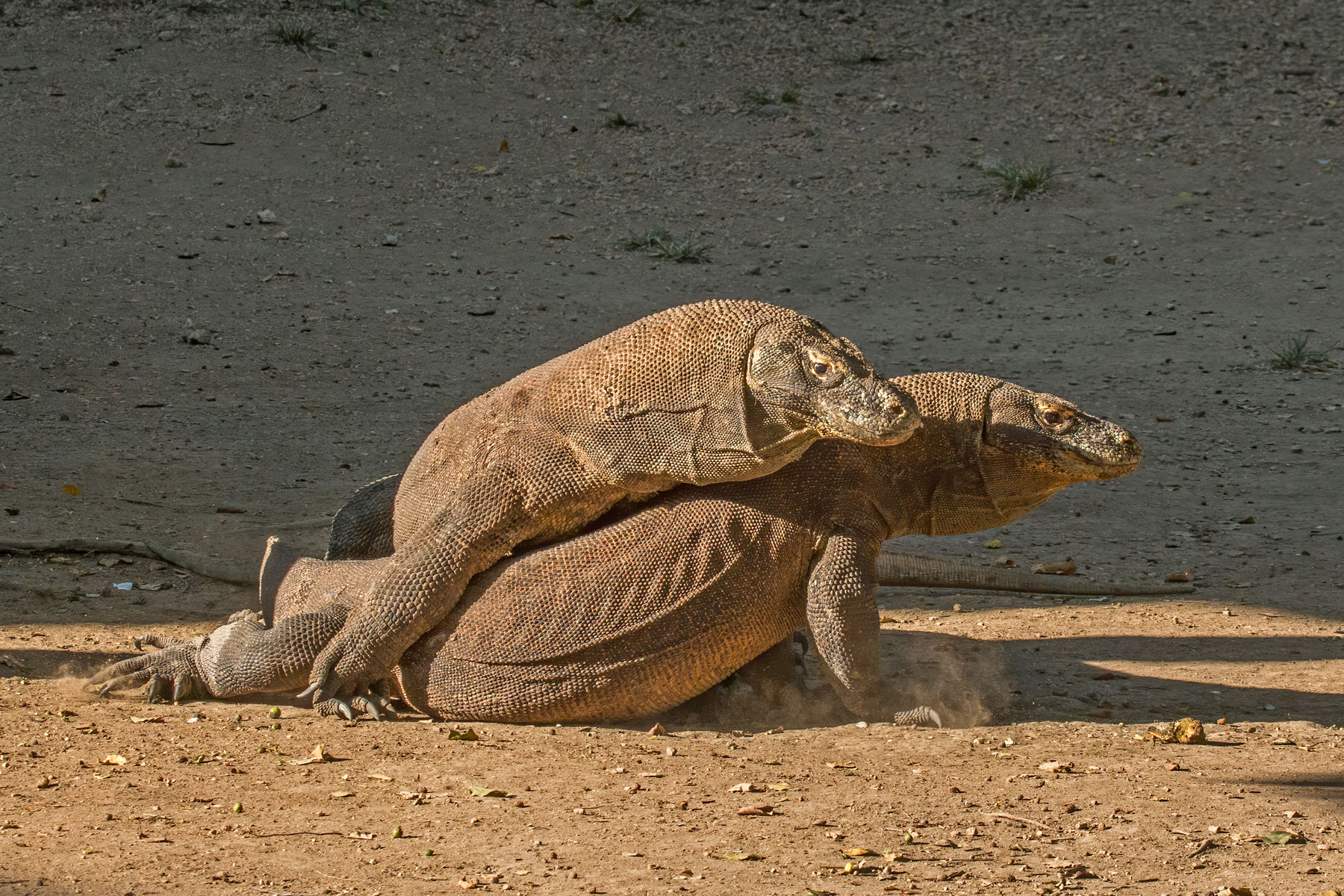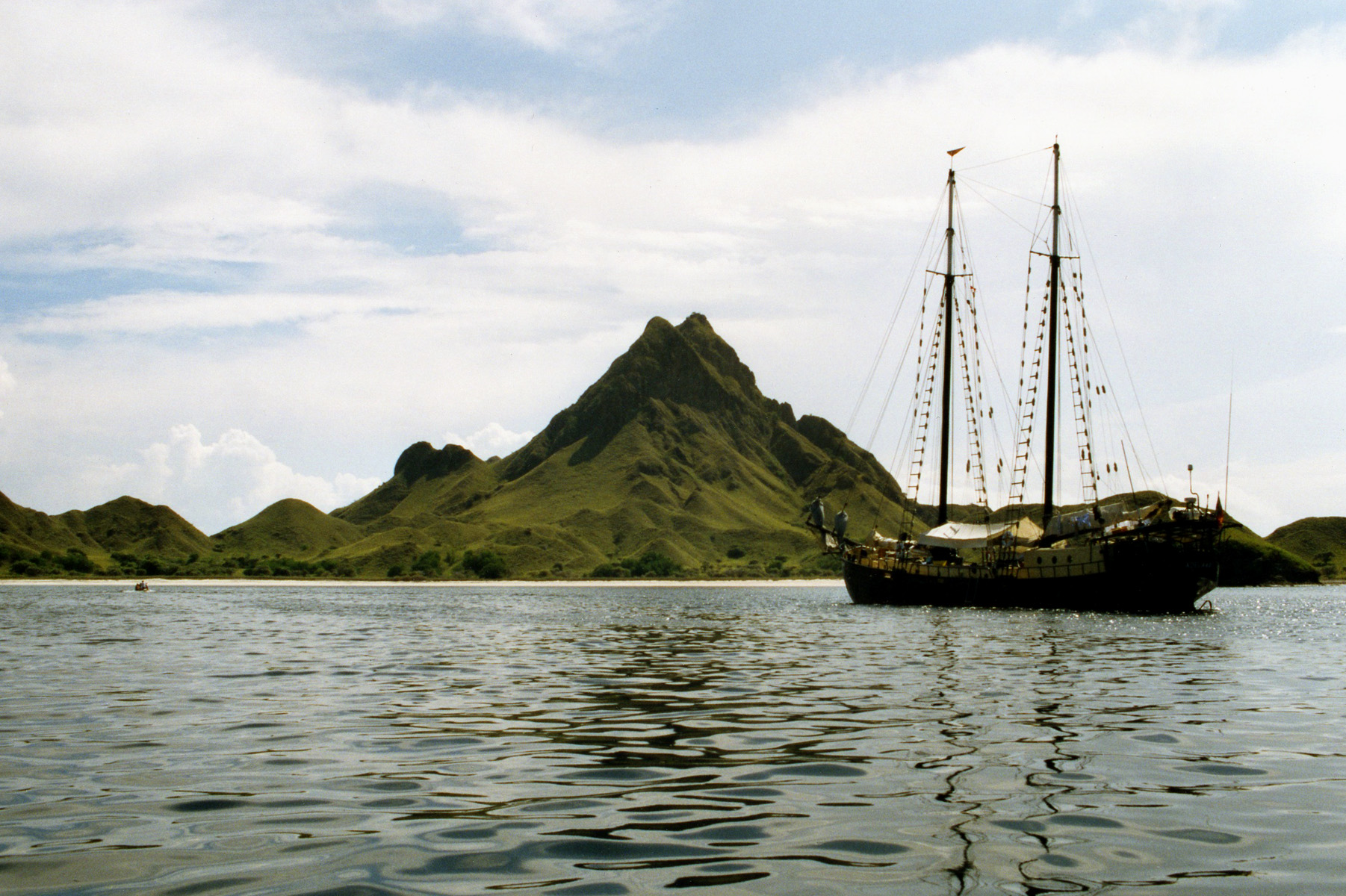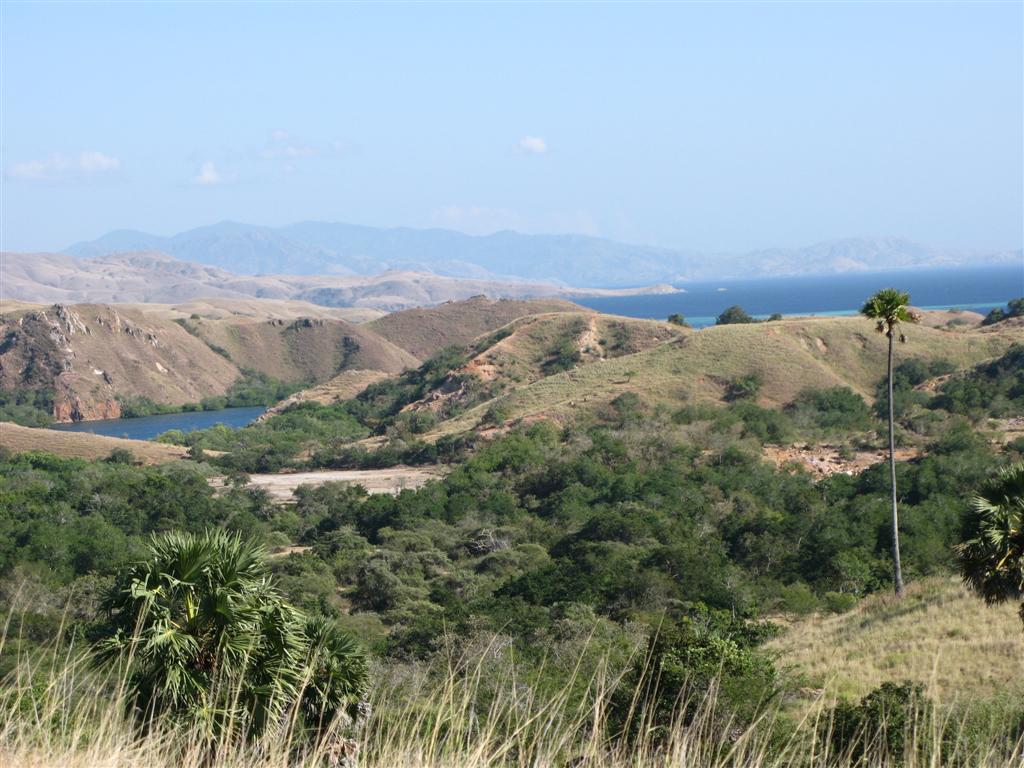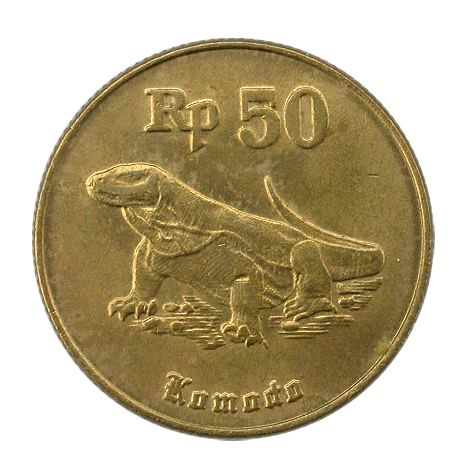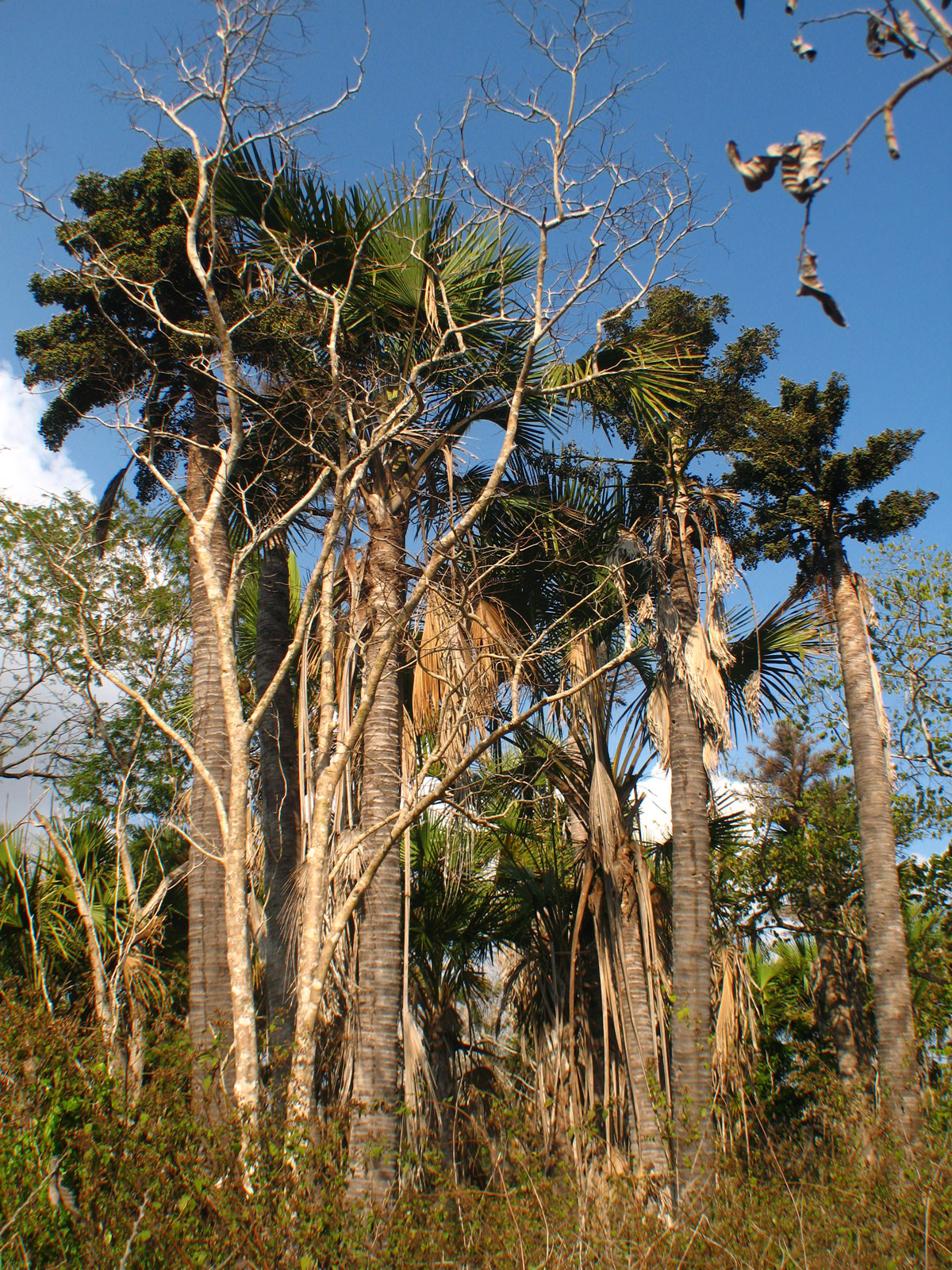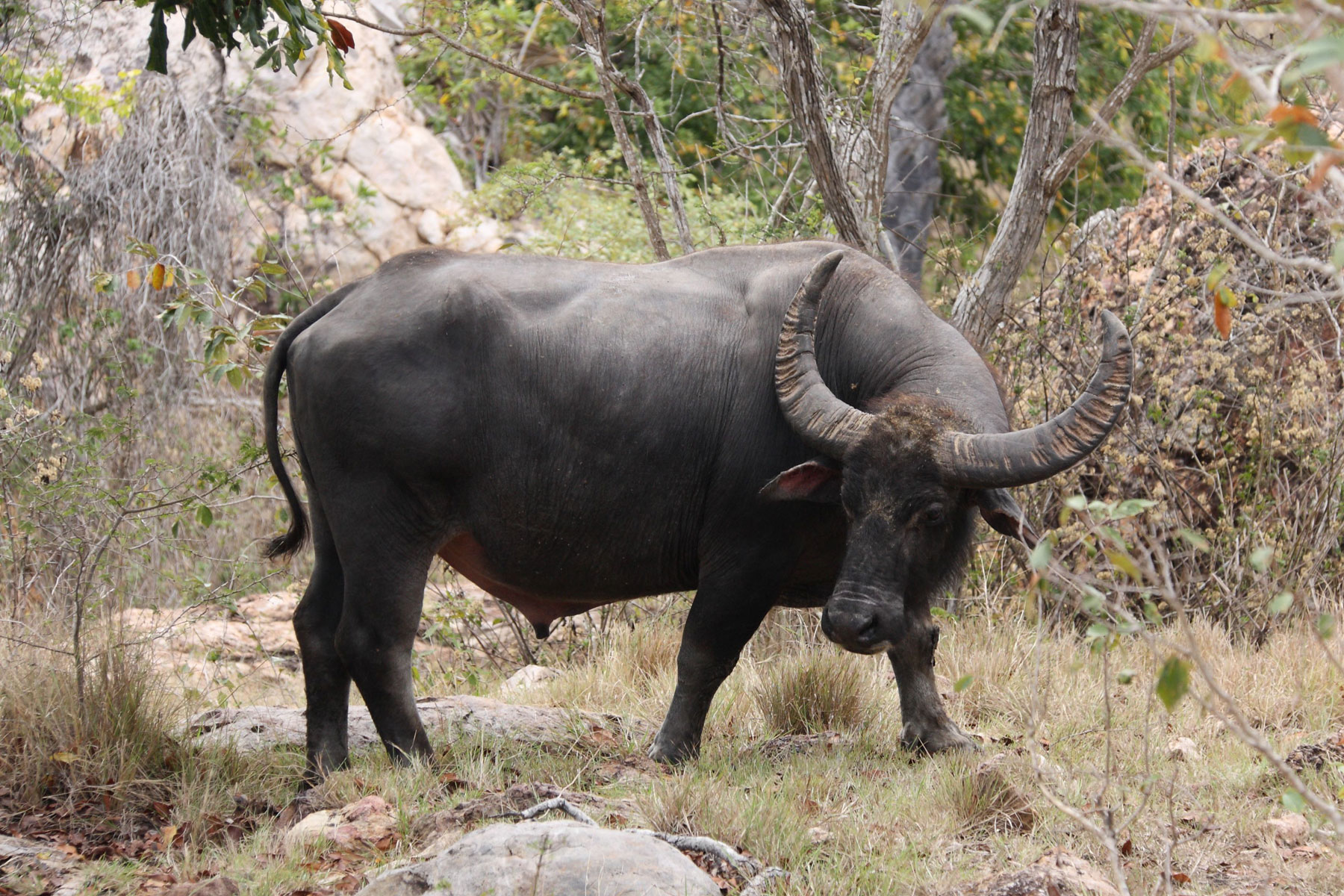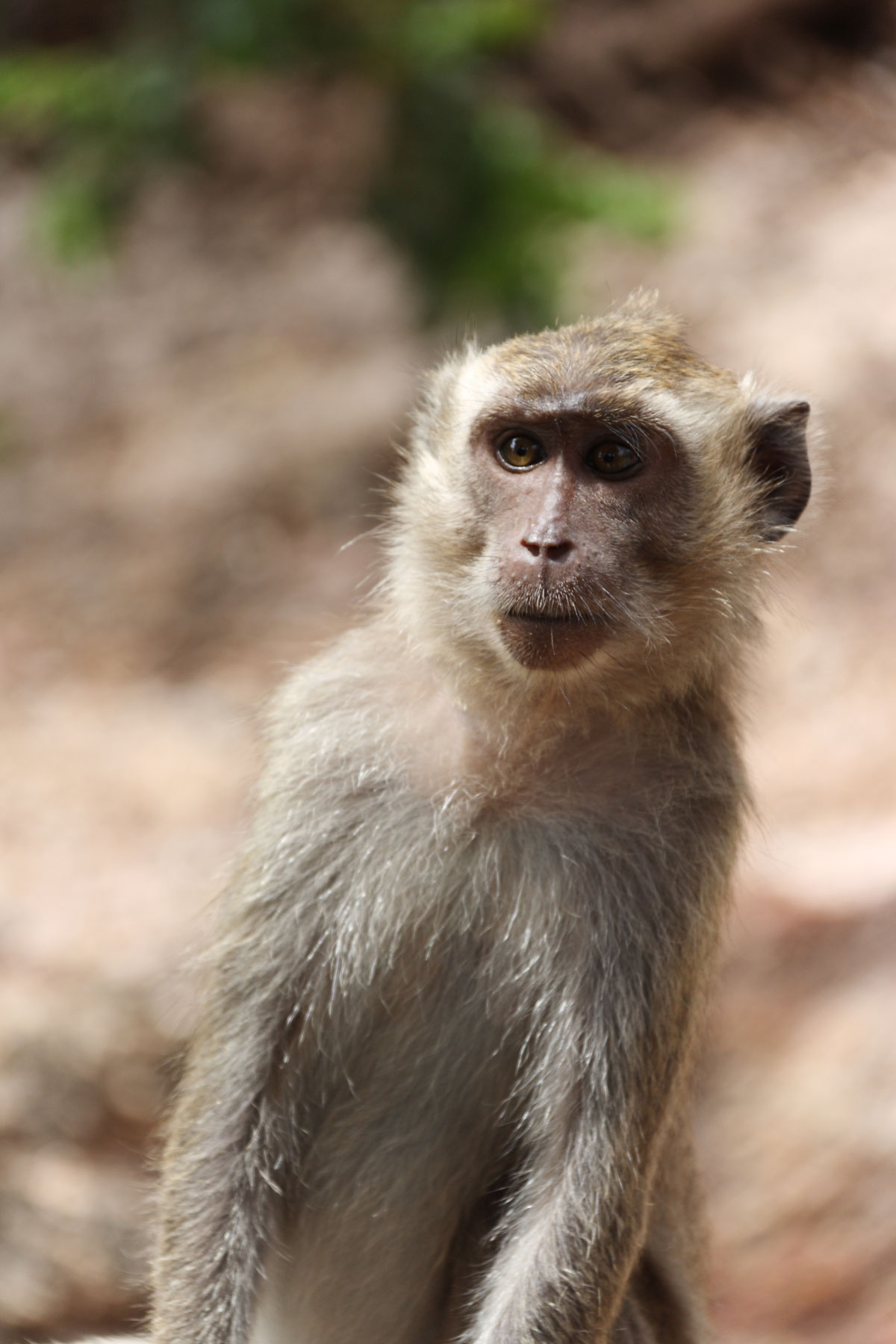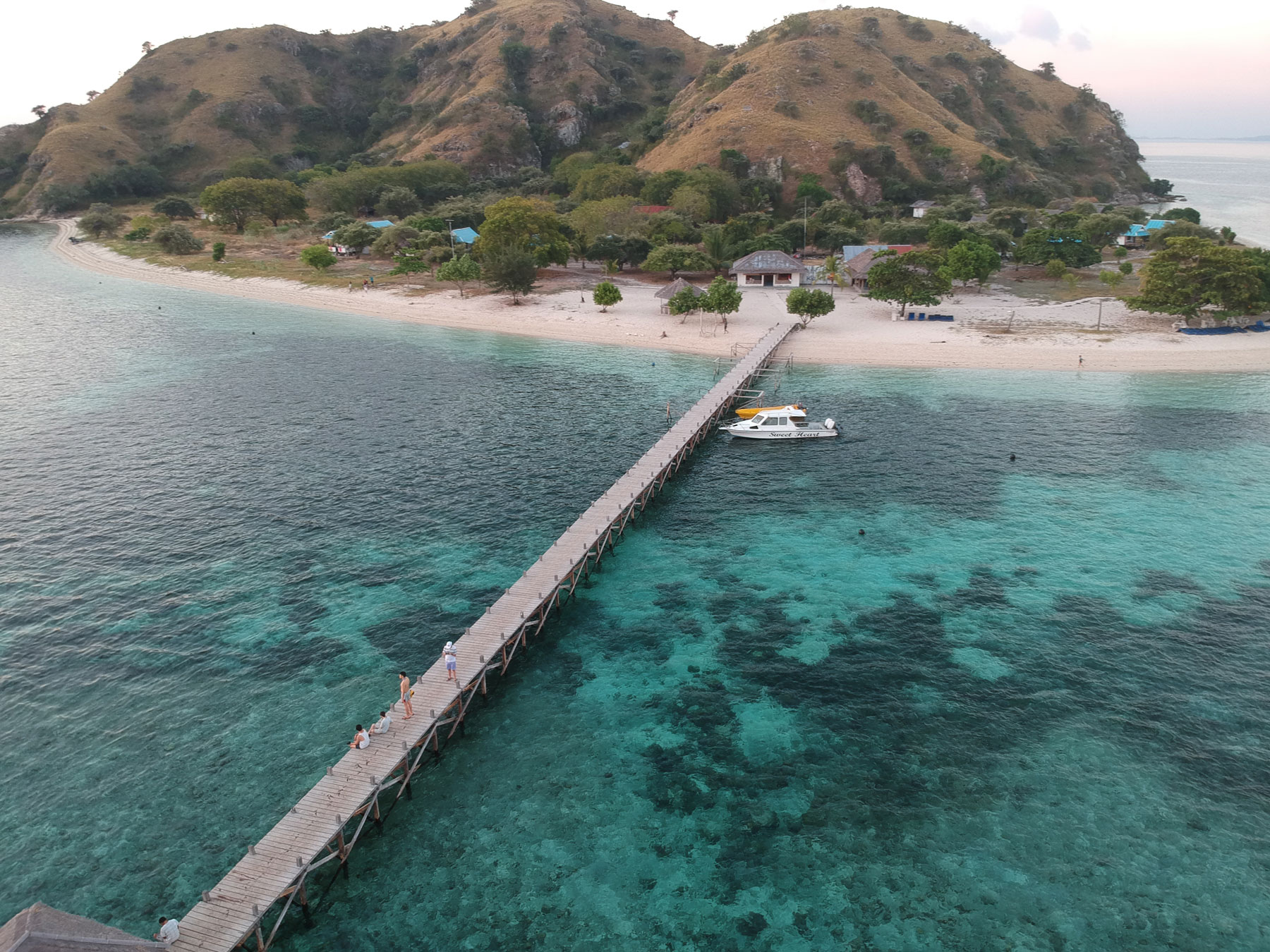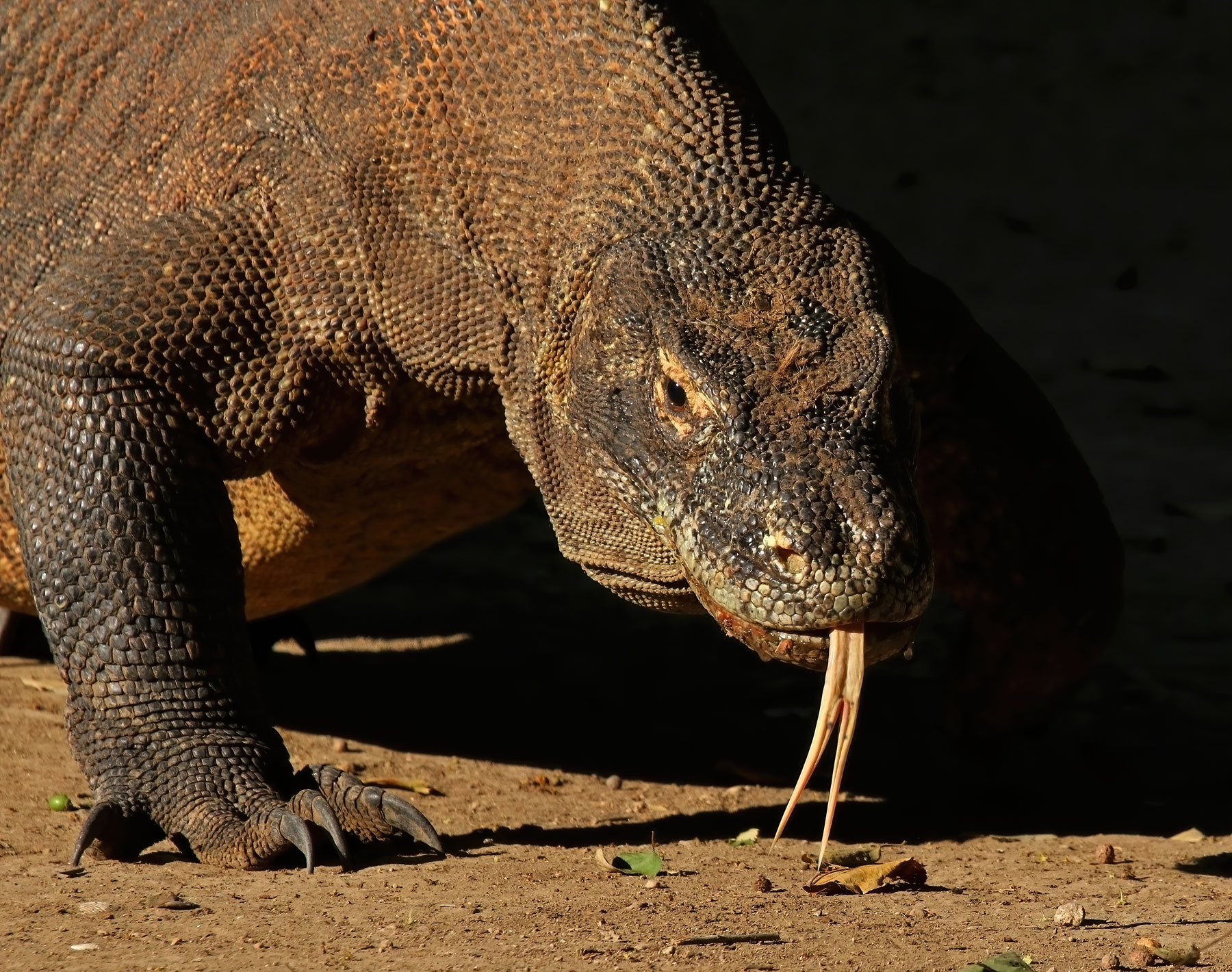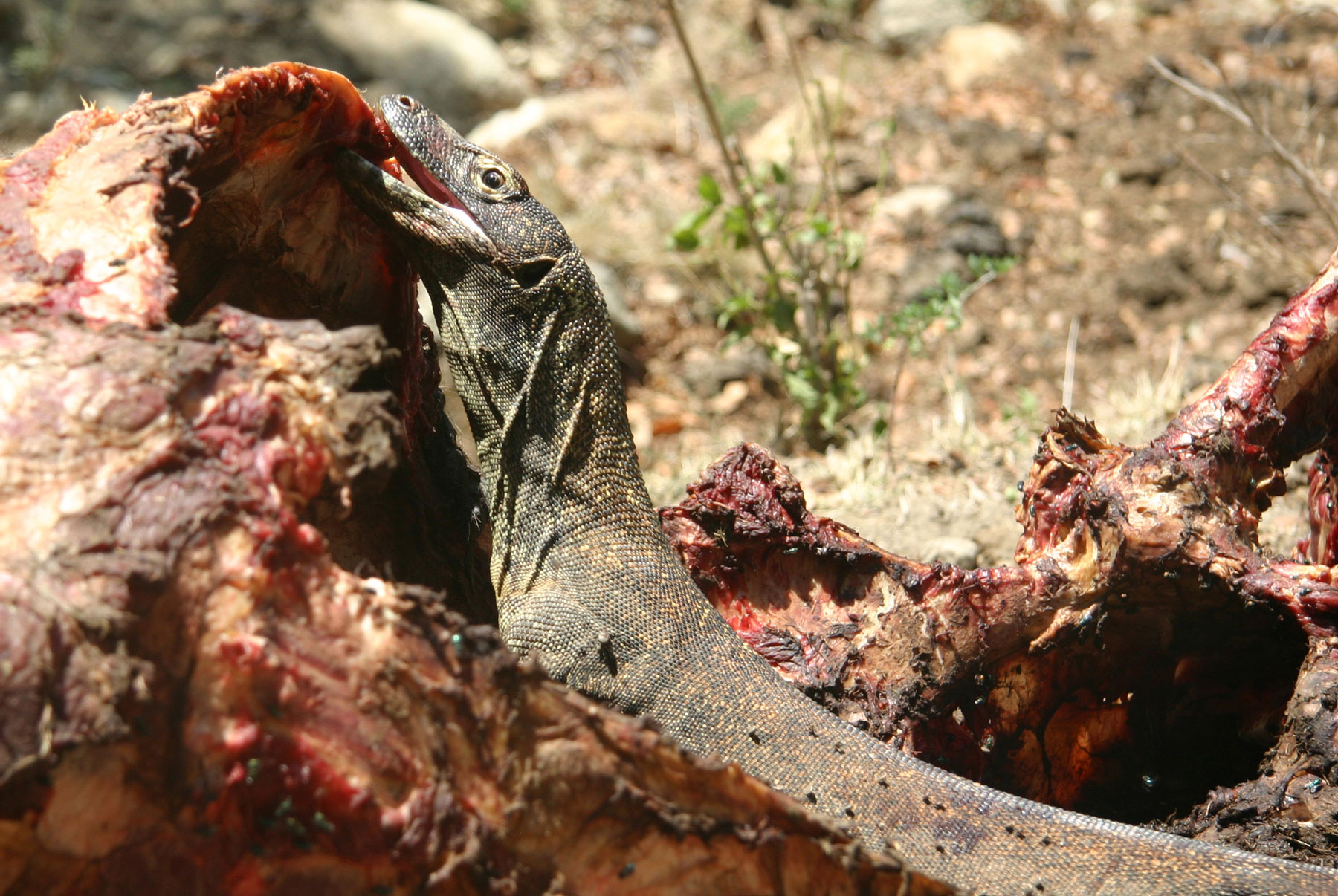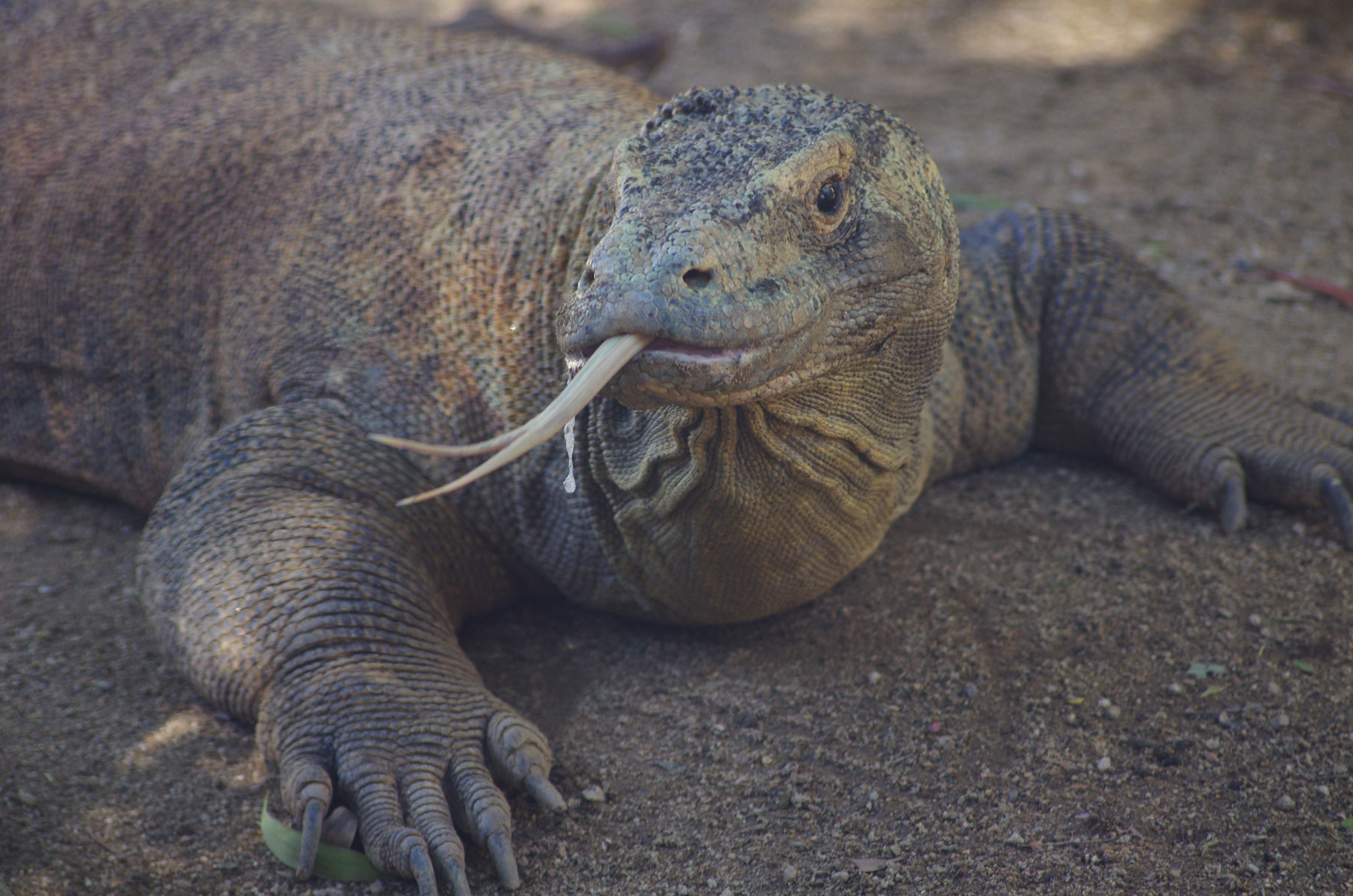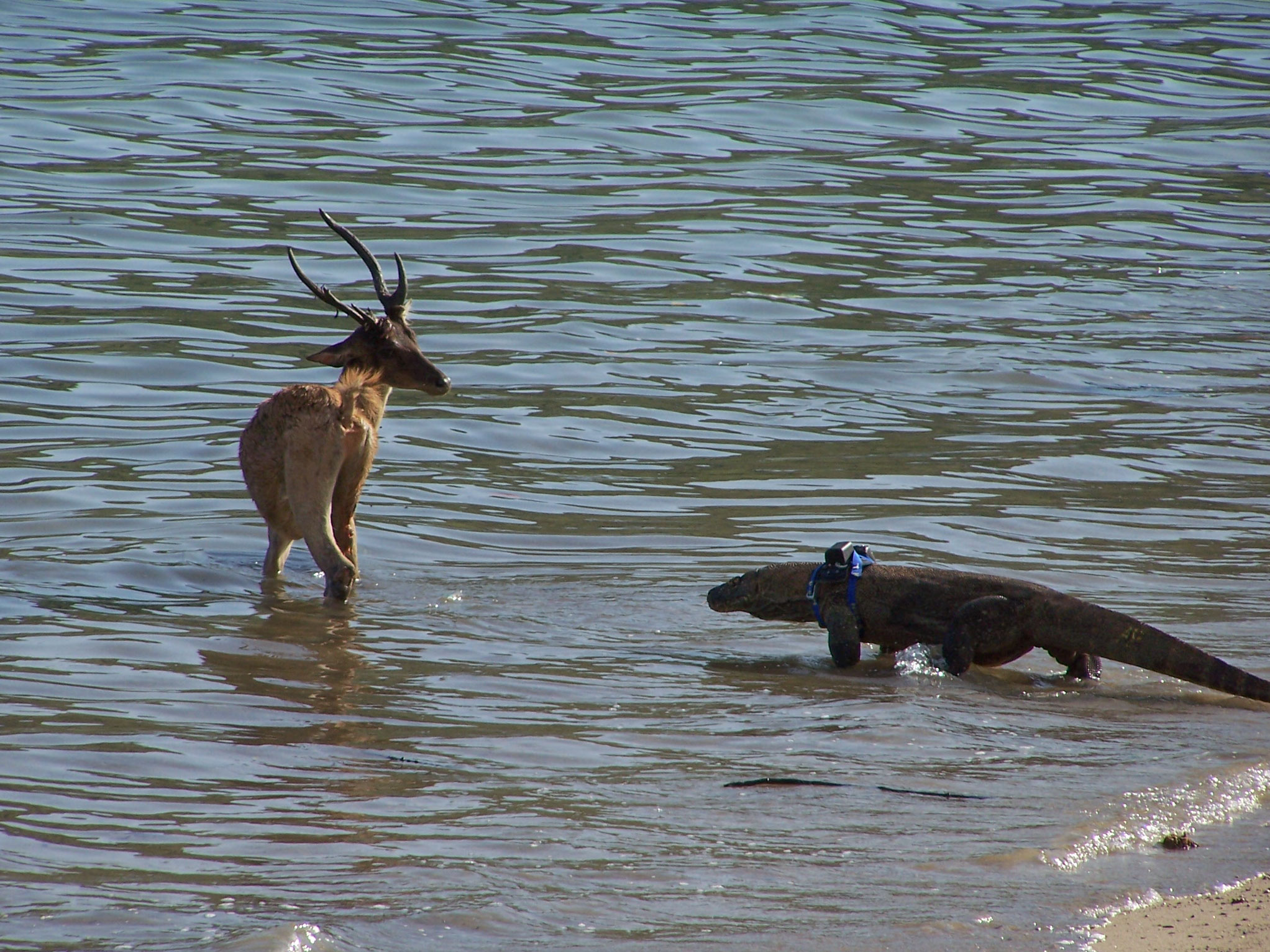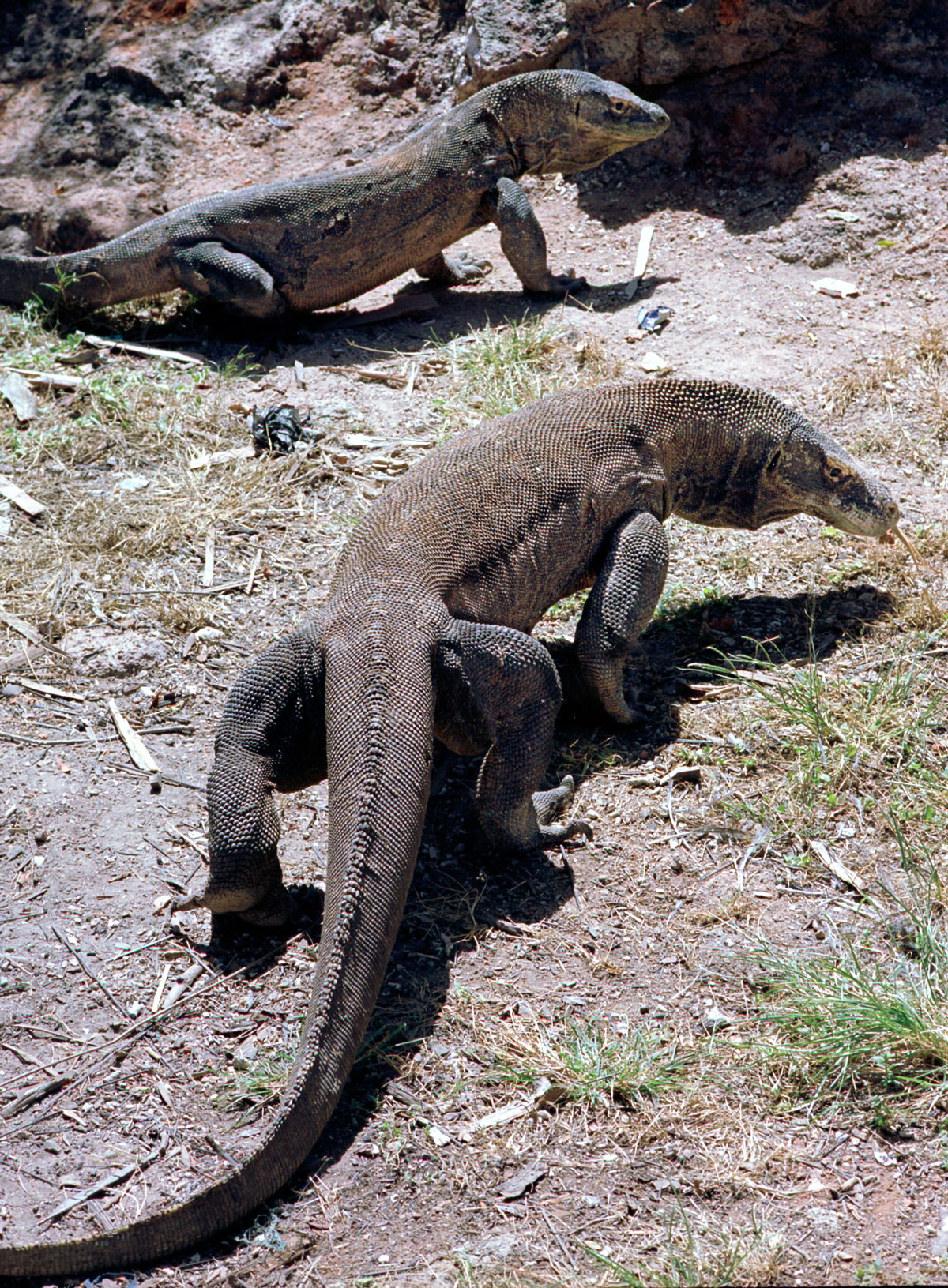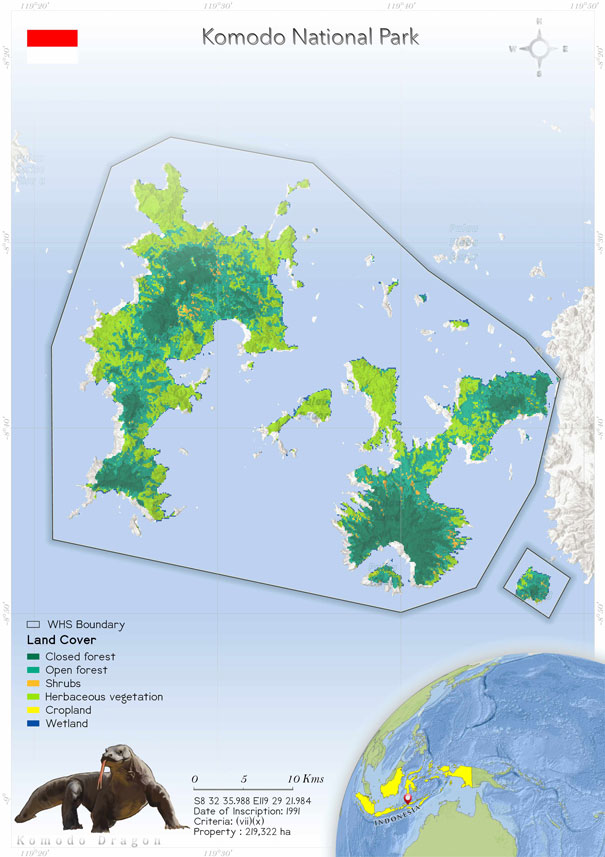
Komodo National Park (609)
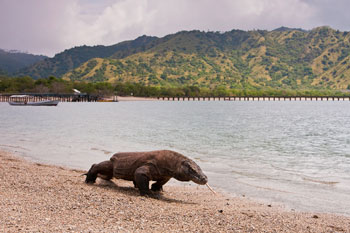 Komodo National Park is famous for the unique and endangered Komodo dragon (Varanus komodoensis). Komodo National Park includes three major islands: Komodo, Rinca and Padar. It also includes 26 other small islands, and each one of them is of volcanic origin. There are 11 small or large mountains, among which the highest is Mount Satalibo (735 m asl). The park is very dry and barren. It has limited water sources, it is very hot. It has mainly savannah vegetation, with species such as the fan palm (Borassus flabellifer). Other plants found in the park include rattans, bamboos, tamarind and mangroves. The habitats of the park include rainforests, beaches, corals and seas. Apart from the Komodo dragon, the site has a rich terrestrial and marine fauna. Species such as the wild pig, Asian wild dog, wild horse, wild buffalo and dugong can be found at the site. The fauna includes 259 species of coral, 1000 species of fish, six species of whale, 10 species of dolphin, turtles, several species of snake, birds and sharks. The park is located in an active volcanic area with a rough topography. The park's buffer zone is primarily marine, and it is responsible for preserving the property's integrity and the rare species that live there.
Komodo National Park is famous for the unique and endangered Komodo dragon (Varanus komodoensis). Komodo National Park includes three major islands: Komodo, Rinca and Padar. It also includes 26 other small islands, and each one of them is of volcanic origin. There are 11 small or large mountains, among which the highest is Mount Satalibo (735 m asl). The park is very dry and barren. It has limited water sources, it is very hot. It has mainly savannah vegetation, with species such as the fan palm (Borassus flabellifer). Other plants found in the park include rattans, bamboos, tamarind and mangroves. The habitats of the park include rainforests, beaches, corals and seas. Apart from the Komodo dragon, the site has a rich terrestrial and marine fauna. Species such as the wild pig, Asian wild dog, wild horse, wild buffalo and dugong can be found at the site. The fauna includes 259 species of coral, 1000 species of fish, six species of whale, 10 species of dolphin, turtles, several species of snake, birds and sharks. The park is located in an active volcanic area with a rough topography. The park's buffer zone is primarily marine, and it is responsible for preserving the property's integrity and the rare species that live there.
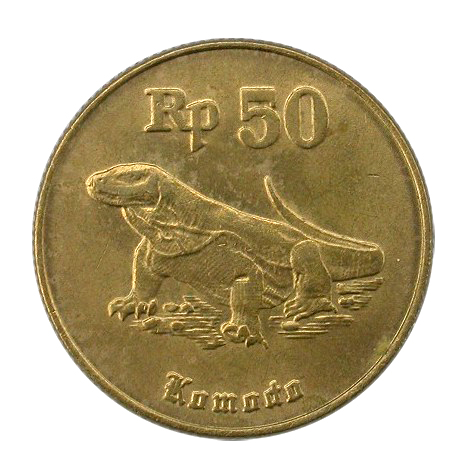 Komodo National Park is located in the East Nusa Tenggara province of south-central Indonesia, in the Sape Straits between the islands of Flores and Sumbawa, between 8° 24' and 8° 50' S and 119° 21' and 119° 49' E (World Heritage Site). The park has a total surface area of 219,322 ha (World Heritage Site), of which 173,300 ha is terrestrial, including the islands of Komodo, Rinca and Padar (Gallegos et al 2005), and 130,177 ha is marine. The Komodo Islands, which are located on the western edge of the biotic transition zone, extend to the New Guinean and Australian coasts and are located between the Oriental and Australian zoogeographic provinces (Claudino 2019). The park’s rugged hills and thorny vegetation add to its allure, as do the sandy beaches and the water’s massive corals (Claudino 2019).
The active volcanic “shatter belt” between Australia and the Sunda Shelf has created the rugged topography. The park is surrounded by a series of rounded hills that are oriented north–south. The Komodo dragon, which was discovered in 1912, is the world's largest terrestrial reptile (Pannell 2012). Since then, efforts have been made to save the species and its natural habitat. The area gained prominence during the 20th century, when it was designated a national park in 1980 (Konservasi 2000). In 1977, it was designated a Human and Biosphere Reserve (UNESO Man and Biosphere Programme, 2011). The property was inscribed as a World Heritage Property in 1991 in the category of natural property under criteria-vii because of the park’s exceptional natural beauty and “superlative natural features”, and under criteria-ix because it is the only endemic habitat of Komodo dragons (Pannell 2012). The park was also designated a National Symbol by the President of the Republic of Indonesia in 1992. Komodo National Park has been identified as the global conservation priority area by the WWF and Conservation International (Konservasi 2000).
The marine area of the site is one of the richest marine environments of the world, having coral reefs, mangroves, seagrass beds, seamounts and semi-enclosed bays, with a total extent of 1214 km2 . There are more than 1000 species of fish, some 260 species of reef-building coral and 70 species of sponge. There are dugong (Dugong dugon), dolphins (10 species), whales (six species), hawksbill turtles (Eretmochelys imbricata) and green turtles (Chelonia mydas) turtles in the marine park (Konservasi 2000). Within the boundaries of the national park, manta ray (Manta birostris) was documented (Dewar et al 2008).
Komodo National Park is located in the East Nusa Tenggara province of south-central Indonesia, in the Sape Straits between the islands of Flores and Sumbawa, between 8° 24' and 8° 50' S and 119° 21' and 119° 49' E (World Heritage Site). The park has a total surface area of 219,322 ha (World Heritage Site), of which 173,300 ha is terrestrial, including the islands of Komodo, Rinca and Padar (Gallegos et al 2005), and 130,177 ha is marine. The Komodo Islands, which are located on the western edge of the biotic transition zone, extend to the New Guinean and Australian coasts and are located between the Oriental and Australian zoogeographic provinces (Claudino 2019). The park’s rugged hills and thorny vegetation add to its allure, as do the sandy beaches and the water’s massive corals (Claudino 2019).
The active volcanic “shatter belt” between Australia and the Sunda Shelf has created the rugged topography. The park is surrounded by a series of rounded hills that are oriented north–south. The Komodo dragon, which was discovered in 1912, is the world's largest terrestrial reptile (Pannell 2012). Since then, efforts have been made to save the species and its natural habitat. The area gained prominence during the 20th century, when it was designated a national park in 1980 (Konservasi 2000). In 1977, it was designated a Human and Biosphere Reserve (UNESO Man and Biosphere Programme, 2011). The property was inscribed as a World Heritage Property in 1991 in the category of natural property under criteria-vii because of the park’s exceptional natural beauty and “superlative natural features”, and under criteria-ix because it is the only endemic habitat of Komodo dragons (Pannell 2012). The park was also designated a National Symbol by the President of the Republic of Indonesia in 1992. Komodo National Park has been identified as the global conservation priority area by the WWF and Conservation International (Konservasi 2000).
The marine area of the site is one of the richest marine environments of the world, having coral reefs, mangroves, seagrass beds, seamounts and semi-enclosed bays, with a total extent of 1214 km2 . There are more than 1000 species of fish, some 260 species of reef-building coral and 70 species of sponge. There are dugong (Dugong dugon), dolphins (10 species), whales (six species), hawksbill turtles (Eretmochelys imbricata) and green turtles (Chelonia mydas) turtles in the marine park (Konservasi 2000). Within the boundaries of the national park, manta ray (Manta birostris) was documented (Dewar et al 2008).
Criterion (vii)
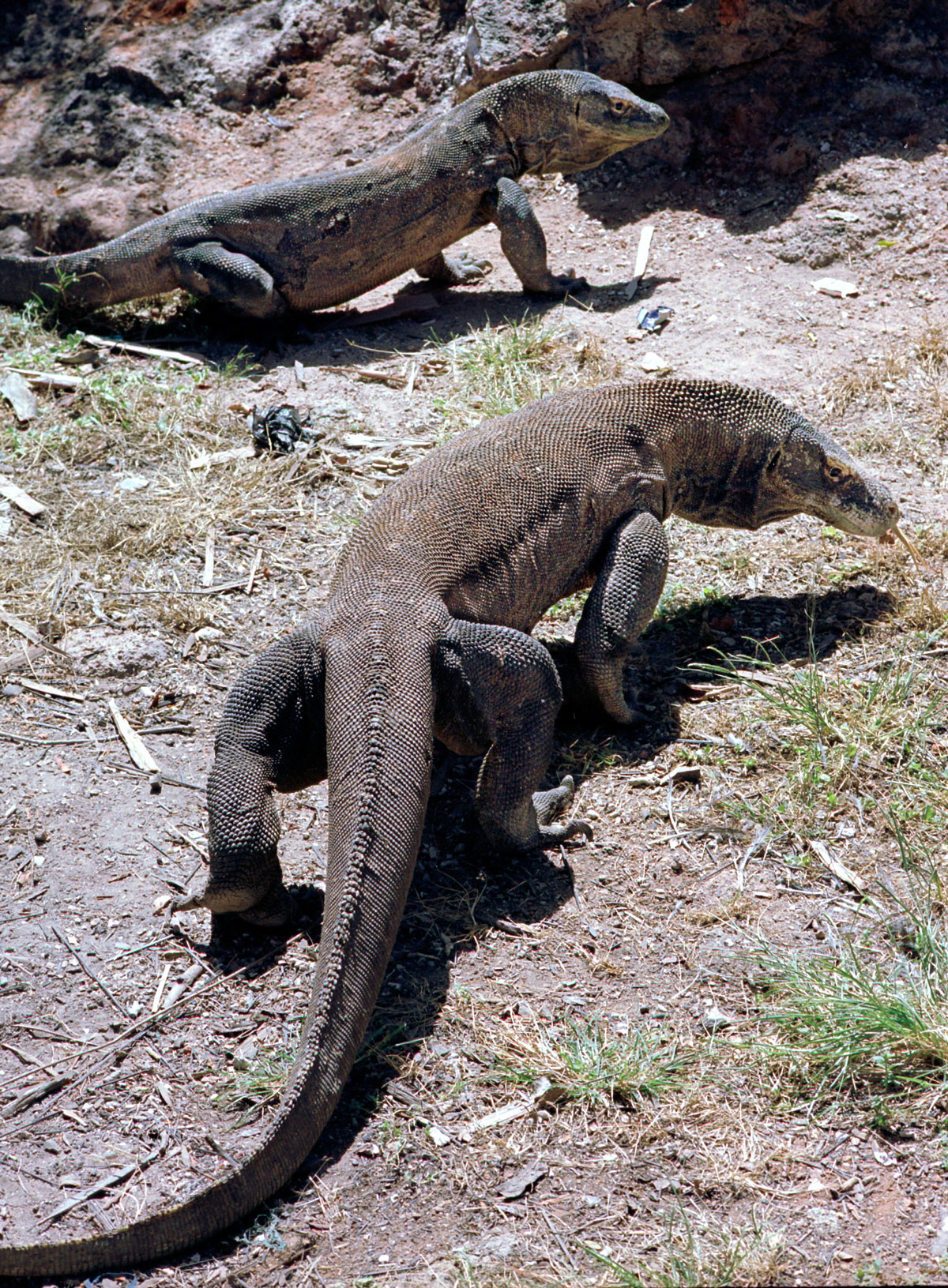 Komodo National Park is a landscape of contrasts between starkly rugged hillsides of dry savanna, pockets of thorny green vegetation, brilliant white sandy beaches and blue waters surging over coral, unquestionably one of the most dramatic landscapes in all of Indonesia. Demonstrating exceptional natural beauty that is all the more remarkable as a counterpoint to the dominant lushness of vegetation which characterizes vast areas of forested Indonesia, and with which most of the world associates the archipelago. An irregular coastline characterized by bays, beaches and inlets separated by headlands, often with sheer cliffs falling vertically into the surrounding seas which are reported to be among the most productive in the world adds to the stunning natural beauty of landscapes dominated by contrasting vegetation types, providing a patchwork of colours.
Komodo National Park is a landscape of contrasts between starkly rugged hillsides of dry savanna, pockets of thorny green vegetation, brilliant white sandy beaches and blue waters surging over coral, unquestionably one of the most dramatic landscapes in all of Indonesia. Demonstrating exceptional natural beauty that is all the more remarkable as a counterpoint to the dominant lushness of vegetation which characterizes vast areas of forested Indonesia, and with which most of the world associates the archipelago. An irregular coastline characterized by bays, beaches and inlets separated by headlands, often with sheer cliffs falling vertically into the surrounding seas which are reported to be among the most productive in the world adds to the stunning natural beauty of landscapes dominated by contrasting vegetation types, providing a patchwork of colours.
Criterion (ix)
Komodo National Park contains the majority of the world’s areas in which wild populations of the Komodo dragon lizard still exist. The largest and heaviest of the world’s lizards, the species is widely known for its impressive size and fearsome appearance, its ability to effectively prey on large animals, and a tolerance of extremely harsh condition. The population, estimated at around 5,700 individuals is distributed across the islands of Komodo, Rinca, Gili Motong and some coastal regions of western and northern Flores
Status
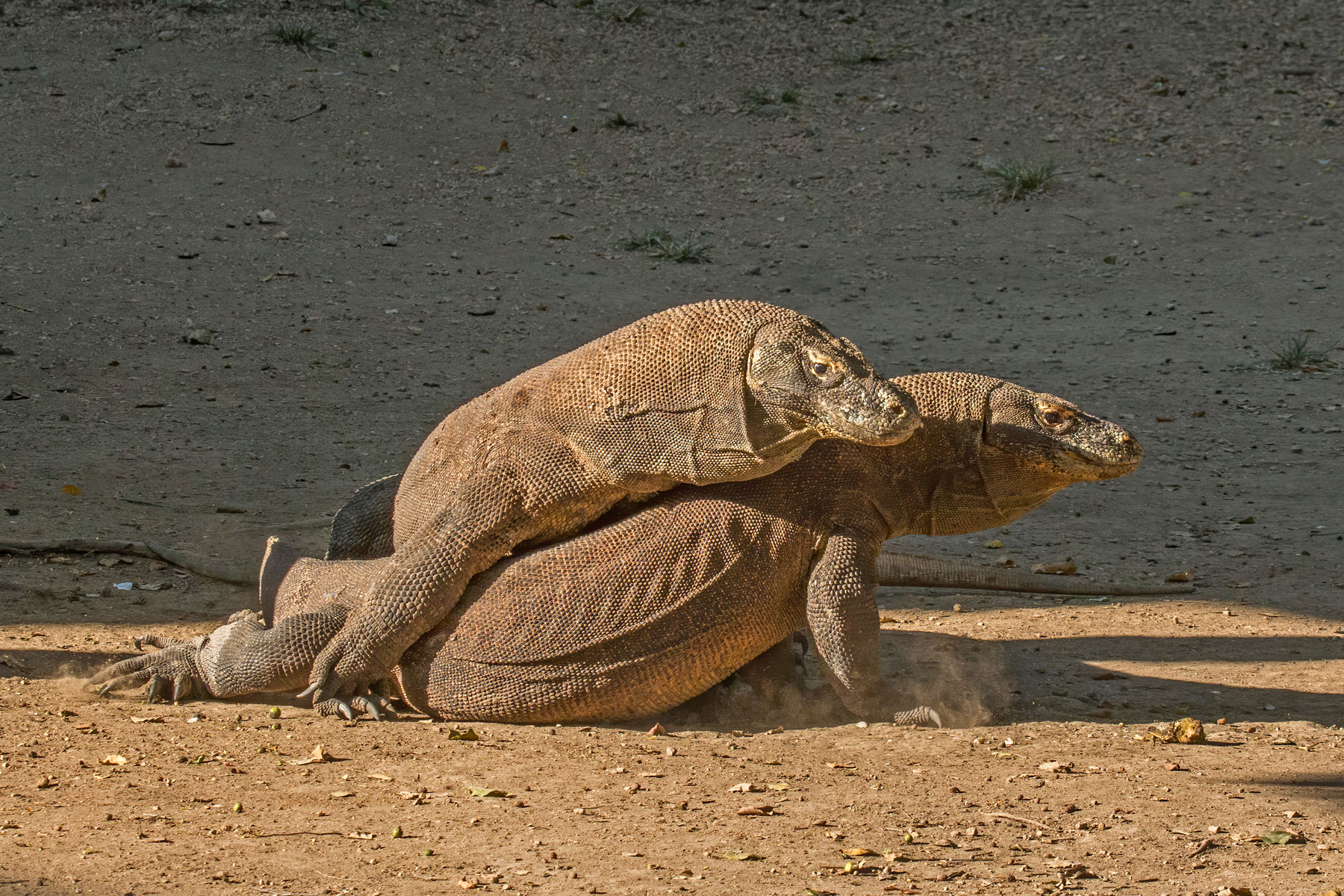 The central government of Indonesia is in charge of Komodo National Park, which is overseen by the Director-General of Forest Protection and Natural Conservation of the Ministry of Forestry. According to the World Heritage Nomination IUCN Summary 1991, the park's management services are good at the local operational level, and the property ranks as one of the best in Indonesia (World Heritage Nomination 1991). The legal protection of this area started when it was declared a national park in 1980. The 2000-2025 management plan (Konservasi 2000) and 2010-2014 strategic plans are followed by the park, with the latter needing to be updated. These plans need to be implemented for the successful establishment of the management and the conservation of the beautiful landscape and its biodiversity. The management is also making efforts to increase the number of visitors and boost the tourism. The management system is expanding to solve the issues regarding the conservation of the marine system and the Komodo dragon. The Indonesian government works very effectively on different programmes promoting the park at the international level by ecotourism management. Regular patrolling is done by the law enforcement agency to stop illegal fishing and poaching in the marine and terrestrial areas. Thus, the problems related to these issues and their effects have been reduced. The management authorities are encouraging research and studies of the park's distinctive biological features and their diversity. There are various emerging opportunities for research in climate change and the marine environment. To promote awareness about sustainable use of natural resources and park conservation among the villagers, programmes such as community awareness and empowerment programmes are being arranged (UNESCO whc.unesco.org).
In 1995, Conservancy's Rapid Ecological Assessment proved that the diversity of the marine biota is rich. However, there are many threats to it because of the overexploitation due to blast fishing and cyanide fishing, which have affected the coral reef communities. Balai Taman National Komodo (Komodo National Park Authority) is looking after the park management, which works under the Ministry of Forestry, DirectorateGeneral of Forest Protection and Nature Conservation. A marine conservation programme was implemented during 1996–2005 by a conservancy named Coastal and Marine Program – Indonesia. After the banning of blast fishing and promotion of activities such as awareness building and constituency building, the illegal fishing and blast fishing decreased almost 90%. The live coral coverage increased about 60% between 1996 and 2002, from 15 m2 and 24 m2 per 100 m2 (Mous et al. 2005).
The major threats are centred around the reef habitat of the marine environment. The destructive (cyanide and blast fishing) and illegal fishing practices are a significant issue (IUCN World Heritage Outlook 2020). Fishing is a severe threat in the park, exerting intense pressure on some species such as lobsters, shellfish, groupers and the Napoleon wrasse. Moreover, destructive fishing methods such as dynamite, cyanide and compressor fishing practices are causing harm to the resource (fish and invertebrate stocks) and its habitat (coral reefs). The threat to the terrestrial ecosystem is from the cutting down of forests for fuelwood and water resources. The poaching of the Timor deer population is causing harm to the Komodo dragon as it is the prey species (Konservasi 2000).
The central government of Indonesia is in charge of Komodo National Park, which is overseen by the Director-General of Forest Protection and Natural Conservation of the Ministry of Forestry. According to the World Heritage Nomination IUCN Summary 1991, the park's management services are good at the local operational level, and the property ranks as one of the best in Indonesia (World Heritage Nomination 1991). The legal protection of this area started when it was declared a national park in 1980. The 2000-2025 management plan (Konservasi 2000) and 2010-2014 strategic plans are followed by the park, with the latter needing to be updated. These plans need to be implemented for the successful establishment of the management and the conservation of the beautiful landscape and its biodiversity. The management is also making efforts to increase the number of visitors and boost the tourism. The management system is expanding to solve the issues regarding the conservation of the marine system and the Komodo dragon. The Indonesian government works very effectively on different programmes promoting the park at the international level by ecotourism management. Regular patrolling is done by the law enforcement agency to stop illegal fishing and poaching in the marine and terrestrial areas. Thus, the problems related to these issues and their effects have been reduced. The management authorities are encouraging research and studies of the park's distinctive biological features and their diversity. There are various emerging opportunities for research in climate change and the marine environment. To promote awareness about sustainable use of natural resources and park conservation among the villagers, programmes such as community awareness and empowerment programmes are being arranged (UNESCO whc.unesco.org).
In 1995, Conservancy's Rapid Ecological Assessment proved that the diversity of the marine biota is rich. However, there are many threats to it because of the overexploitation due to blast fishing and cyanide fishing, which have affected the coral reef communities. Balai Taman National Komodo (Komodo National Park Authority) is looking after the park management, which works under the Ministry of Forestry, DirectorateGeneral of Forest Protection and Nature Conservation. A marine conservation programme was implemented during 1996–2005 by a conservancy named Coastal and Marine Program – Indonesia. After the banning of blast fishing and promotion of activities such as awareness building and constituency building, the illegal fishing and blast fishing decreased almost 90%. The live coral coverage increased about 60% between 1996 and 2002, from 15 m2 and 24 m2 per 100 m2 (Mous et al. 2005).
The major threats are centred around the reef habitat of the marine environment. The destructive (cyanide and blast fishing) and illegal fishing practices are a significant issue (IUCN World Heritage Outlook 2020). Fishing is a severe threat in the park, exerting intense pressure on some species such as lobsters, shellfish, groupers and the Napoleon wrasse. Moreover, destructive fishing methods such as dynamite, cyanide and compressor fishing practices are causing harm to the resource (fish and invertebrate stocks) and its habitat (coral reefs). The threat to the terrestrial ecosystem is from the cutting down of forests for fuelwood and water resources. The poaching of the Timor deer population is causing harm to the Komodo dragon as it is the prey species (Konservasi 2000).
